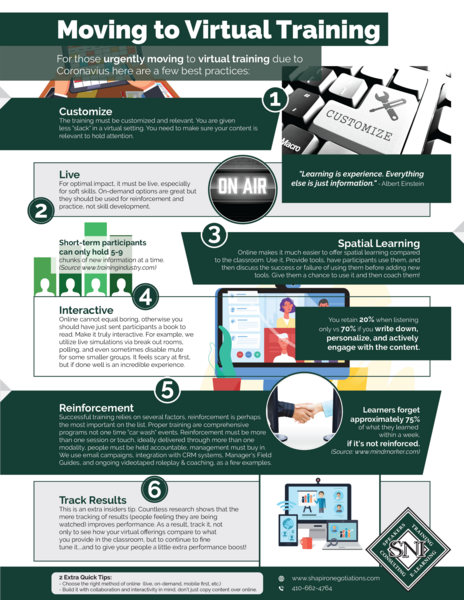ATD Blog
6 Things to Consider When Transitioning to Virtual Training
JJ
By
Tue Mar 24 2020

Loading...
The entire world has been affected by COVID-19. As companies try to figure out how to navigate these unchartered waters, we’ve seen organizations focus on transitioning their training from the classroom to online dlivery.
In this infographic, learn more about what to consider when developing effective virtual training.

